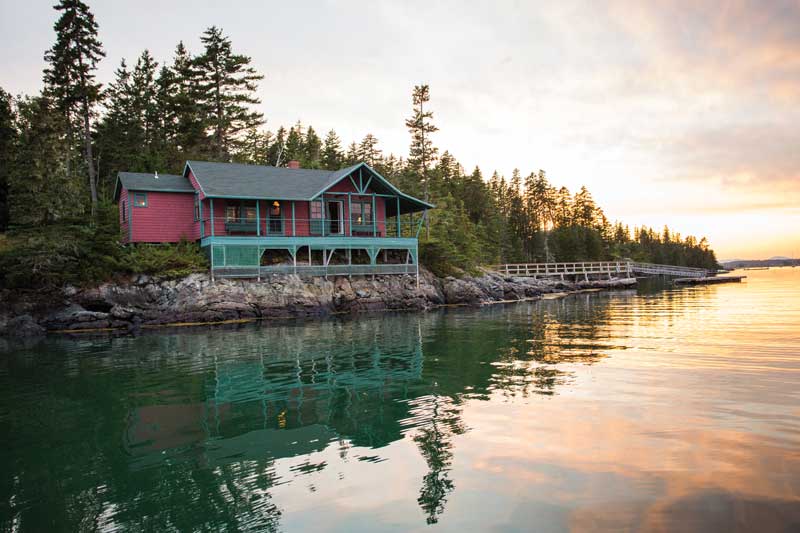Inside, the lucky occupants find themselves lodged in two wood-lined rooms as cozy as the world outside is boundless. Exposed joists dramatize the intersecting planes of a double-pitched roof rising above the top of an interior partition that offers privacy while still allowing space to flow freely through the entire length of the cottage. On the wall formed by a gable above the door on the land side, a honeymooning couple in the early 1900s was inspired to paint a forest of firs containing an osprey nest profiled against a cloud-banked sky—a witty reminder of the view that would be seen had the gable been left open.
The Tucker Daland Guesthouse, named for its sponsor and first owner, began its life as a farmer’s pigsty, then served as a coal storage bin, before being moved in the 1890s from field to rockbound shore and converted to its present use with the help of Boston-based architect Francis Chandler and artist and builder J. Murray Howe II. They placed their little building with its newly-added perimeter porch so close to the water’s edge that it seems to teeter precariously yet fearlessly on the brink of catastrophe.
Happily, the cottage has in recent years been faithfully restored by its present owner, so that this little tongue-in-cheek gem of the Shingle Style may go on bearing eloquent witness to the carefree sense of fun, joined to a perceptive sense of place, that the early rusticators brought with them to the Fox Islands.
Architect Henry N. Cobb is a founding partner of Pei Cobb Freed & Partners.









